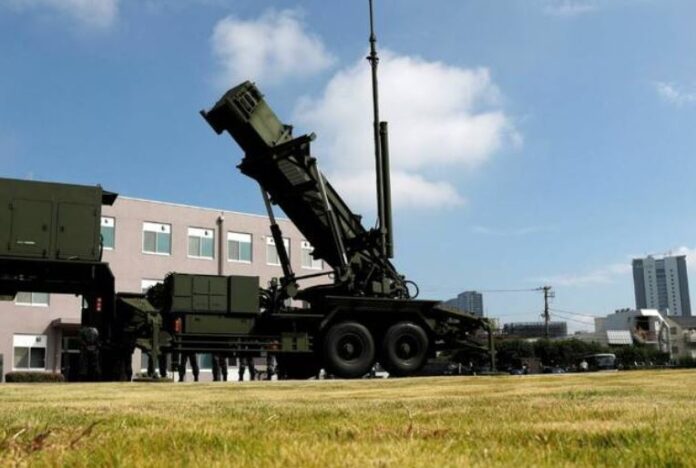China’s DF-27 hypersonic missile, dubbed the “carrier killer,” is reshaping strategic calculations for navies worldwide. Capable of reaching up to 5,000 miles, the missile combines extreme speed with unpredictable last-second maneuvers, making it nearly impossible to intercept. Designed specifically to target and sink naval assets on the move, the DF-27 has heightened military concerns as it places critical locations like Guam and Hawaii within striking range.
Repeated war simulations indicate that the DF-27 could reliably disable U.S. carriers, outpacing radar and tracking systems. In response, the U.S. Navy is accelerating efforts to equip ships with advanced Patriot missile defenses to meet this emerging threat.
Also Read: Russia Expands Bioweapons Lab Known for Weaponizing Anthrax, Smallpox, and Ebola

The DF-27 isn’t alone; China’s DF-17 missile, although shorter in range, adds complexity. Known for mid-flight course changes that evade interception, the DF-17 has become an equally formidable component in China’s hypersonic arsenal. Together, these systems are prompting a reassessment of U.S. defense strategies in the Pacific.
China’s DF-27 hypersonic missile, dubbed the “carrier killer,” is reshaping strategic calculations for navies worldwide. Capable of reaching up to 5,000 miles, the missile combines extreme speed with unpredictable last-second maneuvers, making it nearly impossible to intercept. Designed specifically to target and sink naval assets on the move, the DF-27 has heightened military concerns as it places critical locations like Guam and Hawaii within striking range.
Repeated war simulations indicate that the DF-27 could reliably disable U.S. carriers, outpacing radar and tracking systems. In response, the U.S. Navy is accelerating efforts to equip ships with advanced Patriot missile defenses to meet this emerging threat.
The DF-27 isn’t alone; China’s DF-17 missile, although shorter in range, adds complexity. Known for mid-flight course changes that evade interception, the DF-17 has become an equally formidable component in China’s hypersonic arsenal. Together, these systems are prompting a reassessment of U.S. defense strategies in the Pacific.
Key Points:
DF-27 Hypersonic Missile: China’s DF-27, referred to as the “carrier killer,” can travel up to 5,000 miles with high speed and last-second maneuvers, making it challenging to intercept.
Targeting Naval Assets: The missile is specifically designed to strike moving naval targets, raising alarms among military leaders, particularly regarding key strategic locations like Guam and Hawaii.
Successful War Games: Simulations indicate the DF-27 can consistently sink U.S. aircraft carriers, leaving naval radar systems struggling to respond effectively.
U.S. Navy’s Response: In reaction to this advanced threat, the U.S. Navy is expediting the deployment of Patriot missile defense systems on ships.
DF-17 Missile: The DF-17, while shorter in range, enhances the challenge with its ability to change course mid-flight, making interception even more difficult.
Strategic Reassessment: The emergence of both the DF-27 and DF-17 is prompting the U.S. to rethink its defense strategies in the Pacific region.



